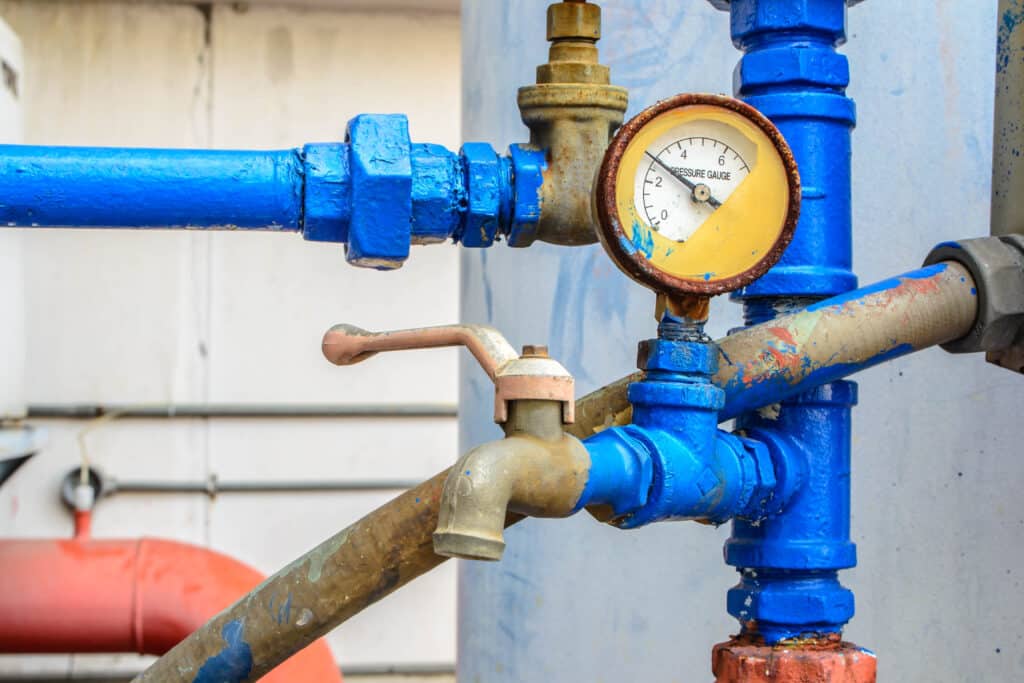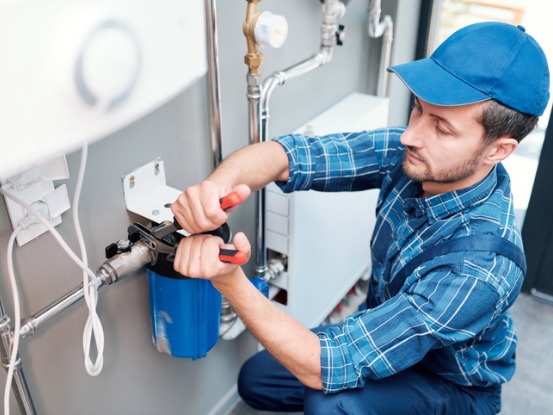The article in the next paragraphs on the subject of Low Water Pressure in the House? is quite interesting. You should investigate it.

Low water stress in your home can be a discouraging issue, impacting every little thing from bathing to cleaning meals. If you're experiencing weak water flow, there are numerous feasible reasons and services to explore. In this overview, we'll go over common factors for low tide stress and functional steps to resolve the problem successfully.
Introduction to Low Tide Stress
Low water stress takes place when the flow of water from your faucets, showers, and various other components is weaker than common. This can make day-to-day jobs much more difficult and less reliable. Understanding the root causes of low tide pressure is critical to locating the best service.
Usual Root Causes Of Low Water Stress
Pipeline Obstructions
Gradually, pipes can end up being obstructed with mineral deposits, sediment, or debris, restricting the circulation of water. This is a common concern in older homes with galvanized steel pipes.
Deterioration
Deterioration within pipes can cause leaks and lowered water pressure. Rust buildup can tighten water circulation, particularly in maturing plumbing systems.
Faulty Stress Regulatory Authorities
Stress regulators are responsible for keeping consistent water stress in your house. If they malfunction, it can cause low water pressure or unequal flow throughout your house.
Metropolitan Water Issues
In some cases, the problem lies outside your home. Municipal water system issues, such as main line leaks or maintenance work, can momentarily minimize water pressure in your location.
Just How to Diagnose Low Water Stress
Inspecting Faucets and Components
Beginning by examining the water pressure at different faucets and fixtures throughout your home. If the issue is separated to particular locations, it might indicate localized issues.
Evaluating Pipelines
Inspect noticeable pipes for indications of leaks, deterioration, or obstructions. Pay attention to any unusual audios, such as knocking or rattling pipes, which could show concerns within the plumbing system.
Consulting with a Plumber
If you're incapable to pinpoint the source of low tide pressure, consider hiring an expert plumber to conduct a thorough inspection. They can recognize underlying issues and recommend suitable solutions.
Do It Yourself Solutions to Repair Low Tide Pressure
Cleaning Aerators and Showerheads
Natural resources can gather in aerators and showerheads, lowering water circulation. Remove and clean up these components frequently to improve water pressure.
Flushing Water Heater
Sediment accumulation in the water heater can limit circulation and lower effectiveness. Flushing the storage tank regularly assists get rid of sediment and maintain optimal performance.
Examining Pressure Regulator
Ensure that the pressure regulatory authority is functioning correctly. Changing or replacing the regulator can assist restore correct water stress throughout your home.
Cleaning Clogs in Pipes
For minor blockages, attempt utilizing a plumbing serpent or chemical drainpipe cleaner to clear blockages in pipes. Beware when utilizing chemicals and follow safety standards.
When to Call a Specialist Plumber
If DIY initiatives fall short to fix the problem or if you presume considerable plumbing problems, it's finest to look for support from a qualified plumber. They have the expertise and tools to resolve complex problems safely and efficiently.
Safety Nets to Maintain Water Stress
Regular Upkeep
Arrange regular upkeep for your plumbing system to stop concerns such as corrosion, leakages, and clogs. Attending to minor issues early can assist avoid more significant repairs later.
Setting Up a Pressure Booster
Consider mounting a pressure booster pump to boost water stress in locations with regularly low circulation. This can be specifically helpful for multi-story homes or homes with high-demand fixtures.
Surveillance Water Use
Be mindful of water use habits and stay clear of ill-using the plumbing system. Basic changes, such as staggering showers and washing lots, can help keep ample water stress.
Conclusion
Taking care of low water stress can be aggravating, yet recognizing the underlying reasons and applying proper options can recover optimum flow throughout your home. Whether it's cleaning up aerators, inspecting pipes, or talking to a plumber, taking proactive actions can guarantee a consistent supply of water for your everyday needs.
FOUR WAYS TO FIX LOW WATER PRESSURE NOW
Turning on a shower or faucet only to find the water comes out in a sad, slow drizzle is never a good feeling. How exactly are you supposed to wash a pan or take a quick shower when it takes 10 minutes just to rinse off a little soap? The good news is that when your water pressure is bad, there's always a cause: typically one that can be easily fixed. Here are some of the most common causes of low pressure and what you can do to fix the issue:
DEBRIS AND MINERAL DEPOSIT BUILDUPS
If you notice low water pressure from just one or two of the fixtures in your house, the problem likely has to do with debris buildup. Water is full of minerals and other debris, all of which can accumulate in your pipes and on your fixtures. This can cause a blockage that affects how much water flows through. To fix this, try filling a small plastic bag with white vinegar, and use a rubber band to hang it around your showerhead or faucet. Let the head of the fixture soak for a few hours, and the vinegar should loosen the deposits.
WATER LEAKS
Leaks are another common cause of low water pressure. If water is flowing out of your plumbing through a hole or crack before it can reach your fixture, the pressure coming out of the faucet or showerhead will be lower. A plumbing professional is your best bet for finding and repairing a leak in your water supply pipes.
Leaks are another common cause of low water pressure. If water is flowing out of your plumbing through a hole or crack before it can reach your fixture, the pressure coming out of the faucet or showerhead will be lower. A plumbing professional is your best bet for finding and repairing a leak in your water supply pipes.
FOUR WAYS TO FIX LOW WATER PRESSURE NOW
Turning on a shower or faucet only to find the water comes out in a sad, slow drizzle is never a good feeling. How exactly are you supposed to wash a pan or take a quick shower when it takes 10 minutes just to rinse off a little soap? The good news is that when your water pressure is bad, there's always a cause: typically one that can be easily fixed. Here are some of the most common causes of low pressure and what you can do to fix the issue:
DEBRIS AND MINERAL DEPOSIT BUILDUPS
If you notice low water pressure from just one or two of the fixtures in your house, the problem likely has to do with debris buildup. Water is full of minerals and other debris, all of which can accumulate in your pipes and on your fixtures. This can cause a blockage that affects how much water flows through. To fix this, try filling a small plastic bag with white vinegar, and use a rubber band to hang it around your showerhead or faucet. Let the head of the fixture soak for a few hours, and the vinegar should loosen the deposits.
WATER LEAKS
Leaks are another common cause of low water pressure. If water is flowing out of your plumbing through a hole or crack before it can reach your fixture, the pressure coming out of the faucet or showerhead will be lower. A plumbing professional is your best bet for finding and repairing a leak in your water supply pipes.
Leaks are another common cause of low water pressure. If water is flowing out of your plumbing through a hole or crack before it can reach your fixture, the pressure coming out of the faucet or showerhead will be lower. A plumbing professional is your best bet for finding and repairing a leak in your water supply pipes.
A VALVE ISSUE
If you have low water pressure throughout your home, check your main shut-off valve to make sure it's completely open. You may also want to see if there's a pressure-reducing valve installed. If there is, have a plumber help you adjust the settings to get the pressure you're looking for.
OTHERS USING WATER
Believe it or not, your low water pressure could be caused by your neighbors. If you notice low pressure at certain times of day, it may be because you and the people living next to you have similar schedules - when everyone is showering at the same time, the pressure will be lower in every home. Low pressure throughout the neighborhood may also be caused by an issue with your municipal water supply. If that's the case, call the supplier to see if they're working on the issue.
https://www.rotorooter.com/blog/water-leaking/low-water-pressure-fixes/

Hopefully you enjoyed our excerpt on 4 Ways to Troubleshoot Low Water Pressure. Many thanks for finding the time to read through our post. Be sure to take a moment to promote this content if you enjoyed it. I am grateful for your time. Please check up our site back soon.
Book